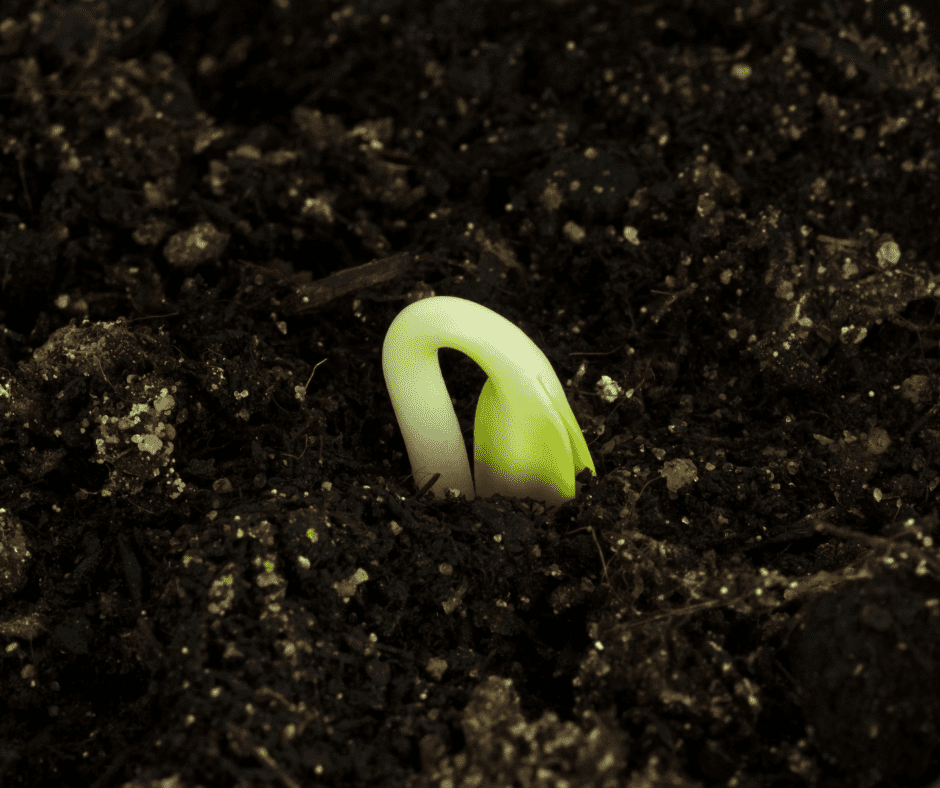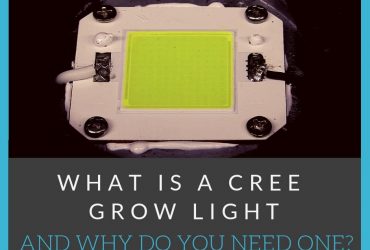Grow Lights vs Sunlight from Window Sills
As an indoor gardener, I know that choosing between grow lights vs. sunlight from window sills is, at times, surprisingly tricky. Sunlight offers the ideal mix of lighting to support growth, which makes it seem like the perfect choice. But even so, that doesn’t mean sunlight from window sills is always enough.
Since that’s the case, I always recommend looking at the benefits and drawbacks of both approaches. That way, you can choose the best lighting strategy for your plants, leading to the strongest yields and ensuring your plants thrive. Here’s what you need to know about grow lights vs. sunlight from window sills.
Grow Lights vs Sunlight from Window Sills
Grow lights are a type of technology designed to mimic some or all of the characteristics of direct sunlight. Grow lights differ from other artificial lights in your home, like the bulbs you use in table lamps.
With grow lights, there’s usually a combination of blue light and red light to support plant growth. In some cases, this gives light produced by grow light bulbs a different tint. However, even if a grow light appears white to our eyes, the light wavelengths present covers a surprisingly broad spectrum, similar to sunlight.
When you use artificial lighting, you can choose models that let you adjust the light mixture. Many fixtures have separate settings for bloom and vegetative phases, for example. By selecting the proper setting, the fixture changes the light mix to support that stage of plant development.
While that may make it seem like artificial lights are always the best choice, it’s critical to remember that direct sunlight covers what plants naturally require. As mentioned above, sunlight offers the perfect mix of spectrums to support plant life. Since the distribution of wavelengths in natural light is what plants evolved to use best, it’s technically a better choice than grow lights when it’s available.
However, there are many situations where sunlight alone isn’t enough. Additionally, placing plants in positions where they can get enough sunlight isn’t always practical. As a result, grow lights are often excellent substitutes or supplements, ensuring your plants get precisely what they need.
Pros and Cons of Grow Lights

growing plants with a grow light
Overall, the biggest reason to use grow lights is they allow you to ensure your plants get the light they need, even in areas where sunlight is lacking. Whether you live in a region with shorter amounts of daylight during the winter or want to place your plants in spots other than window sills, you can support your plants with a grow light.
Another benefit of grow lights is it lets you direct light. By adjusting the position of the fixture or modifying settings, you can influence light intensity. Plus, you can choose options that provide full-spectrum light similar to direct sunlight or favor specific wavelengths to support particular growth phases.
When it comes to drawbacks, the cost is usually one of the most noticeable. Artificial light fixtures run the gamut when it comes to pricing, and some are quite expensive. Plus, you have to pay for any electricity powering your grow lights. While LED grow lights are highly efficient in that regard, it’s still a point you need to consider.

lettuce growing under led lights
Additionally, grow lights can get hot, potentially to the point of harming plants. Again, LED grow lights can limit heat generation, making them an excellent choice if you’re concerned about scorching your plants. However, even those fixtures can get warm.
Finally, grow lights are highly directional in nature. In some cases, that’s a bonus, as you can focus your light on your plants. However, it also means they offer limited coverage, so you may need a large grow light or several fixtures to handle a big area.
Pros:
- Mimic natural sunlight artificially
- Control over lighting conditions
- Full-spectrum and wavelength-specific versions are available
- Make up for a lack of available sunlight
- Grow plants in nearly any part of your home
Cons:
- Grow lights can be expensive (check out my picks for LED grow lights under $200)
- Using grow lights requires electricity
- The light is directional
- Heat is potentially an issue
Pros and Cons of Sunlight from Window Sills
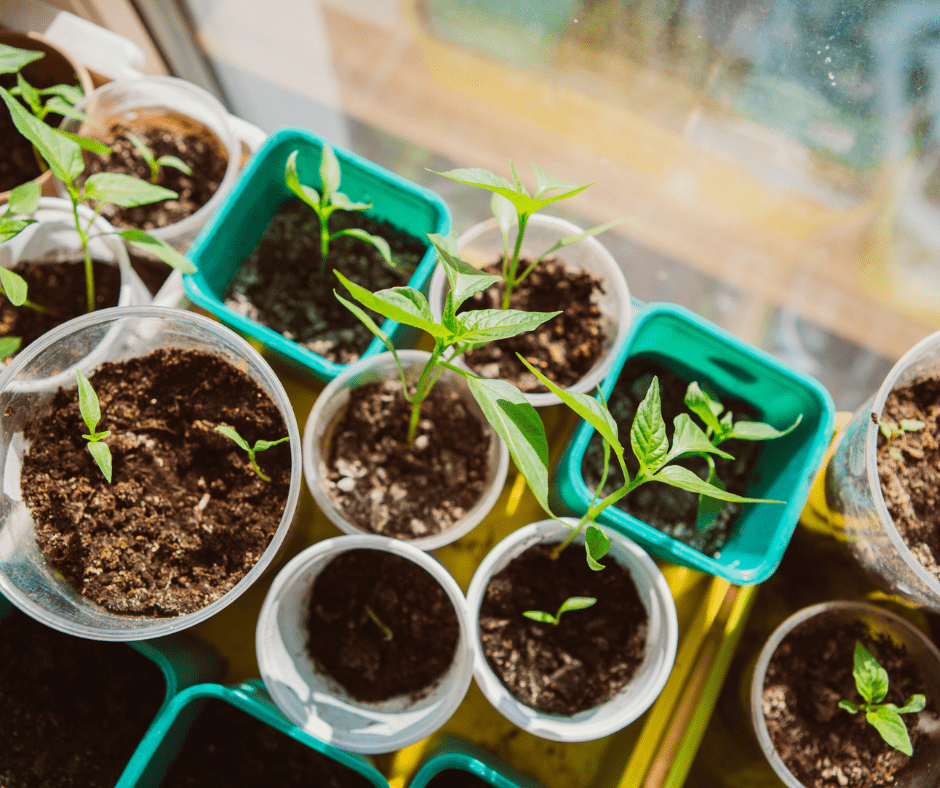
growing plants with natural sunshine
The biggest benefit of using natural light from the sun for your plants is that it’s naturally exactly what plants need. The mix of wavelengths is what plants evolved to use, so it’s essentially the best option in that regard.
Sunlight is also free. You don’t need to buy a fixture or pay to operate anything, which is excellent for the budget-conscious. There are also no waste concerns, as you don’t have to throw away packaging or old fixtures since sunlight doesn’t come with any of that.
With sunlight, plants also get more usable energy in less time. While the exact ratio can vary depending on the grow light, it can take around 12 hours of light from grow lights to replace what plants can get with just six hours of sunlight.
When it comes to the drawbacks of relying on sunlight, the biggest is the lack of control. You can’t tell the sun when to rise or set, and you can’t direct it through the window you want to use. Essentially, you’ll only have sunlight during daylight hours in your area, supposing that weather conditions don’t get in the way.
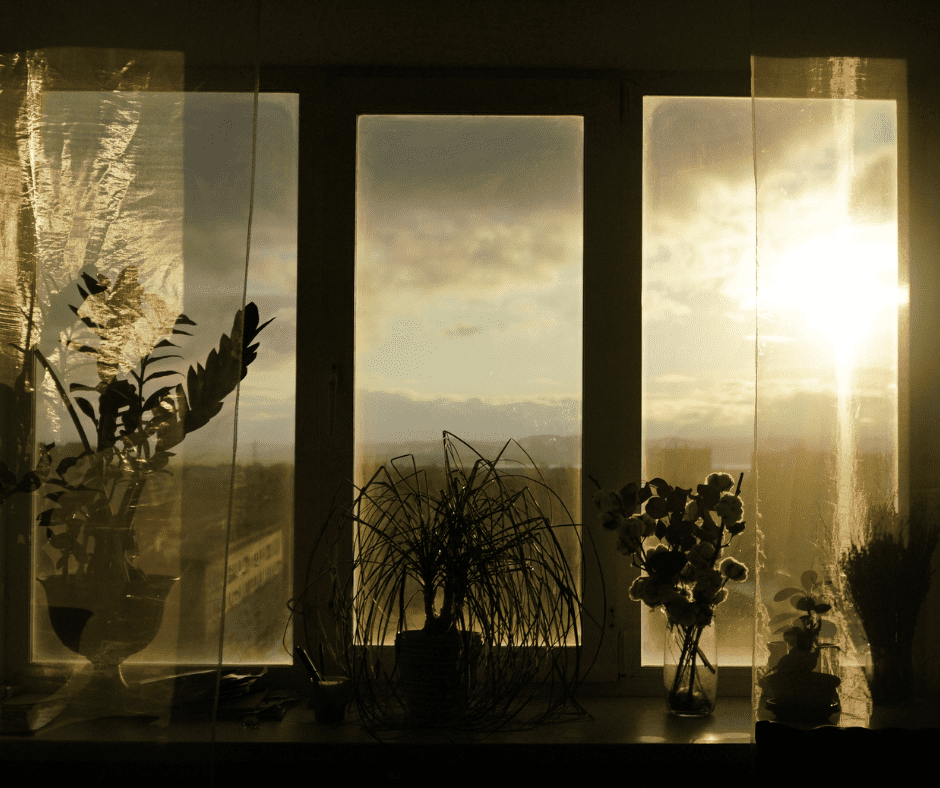
low natural light
Finally, you can’t adjust the composition of sunlight. The wavelengths and intensity present are what they are, and you can’t optimize the conditions for specific growth phases.
Pros:
- Sunlight is free
- Sunlight is natural light and generates no waste
- Offers the perfect mix of wavelengths
- More functional energy per hour
Cons:
- You can’t control the sun to ensure there’s enough light
- Not all homes have suitable windows to position plants optimally
- The number of daylight hours varies based on the season
FAQs About Grow Lights vs Sunlight from Window Sills
Are Grow Lights as Good as Sunlight?
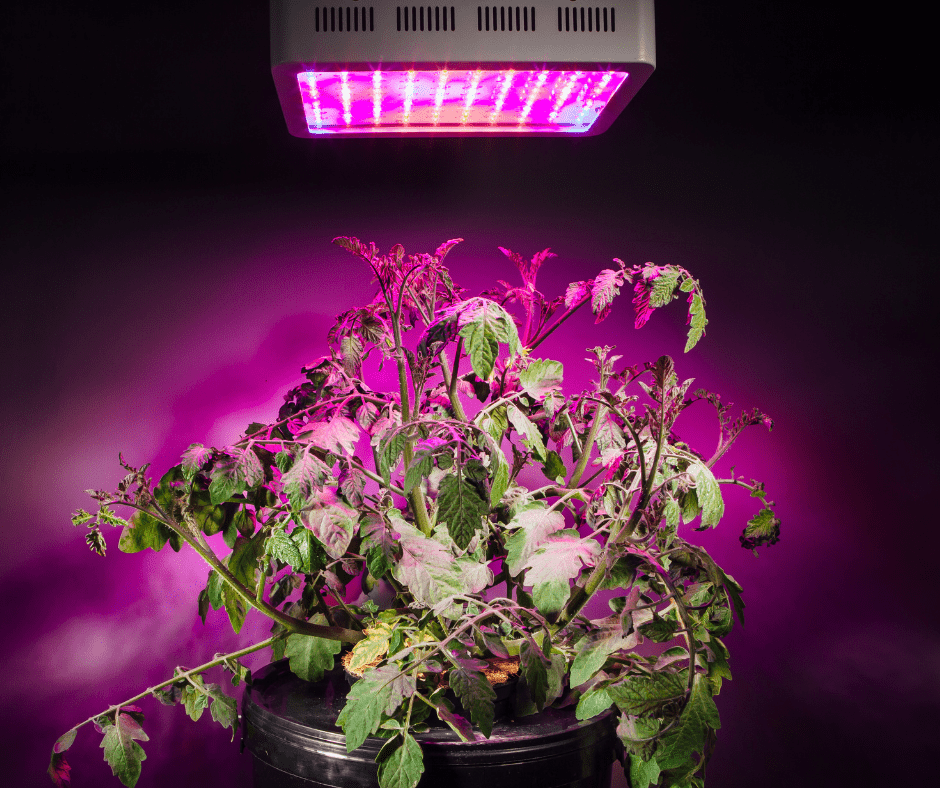
tomatoes under artificial light
Technically, “good” is subjective, leaving room for debate about whether grow lights are as functional as sunlight when you have plants growing indoors. However, what’s critical to understand is that grow lights are explicitly designed to offer the needed lighting conditions. They can provide a similar range of wavelengths, which can make grow lights a solid substitute for sunlight.
What’s critical to remember is that your plants may require more hours of light from grow lights than they would from the sun. But grow lights can also give you the ability to adjust the mix of light to align with plant needs during specific growth phases, so many consider that a reasonable trade-off. You can read about a few of my tips and tricks to help you with your grow lights.
What Type of Grow Light Is Best?
In most cases, LED grow lights with full-spectrum lighting capabilities are the best option for most indoor gardeners. They’re energy-efficient and don’t produce as much heat as some alternatives, all while covering the critical wavelengths. Plus, they’re potentially slimmer fixtures, which some people appreciate.
If it’s within your means, getting an LED grow light with different settings for various growth phases is a wise move. That allows you to adjust your lighting conditions to support blooms, spur growth, and achieve more substantial yields.
Which Window Sills Work Best?
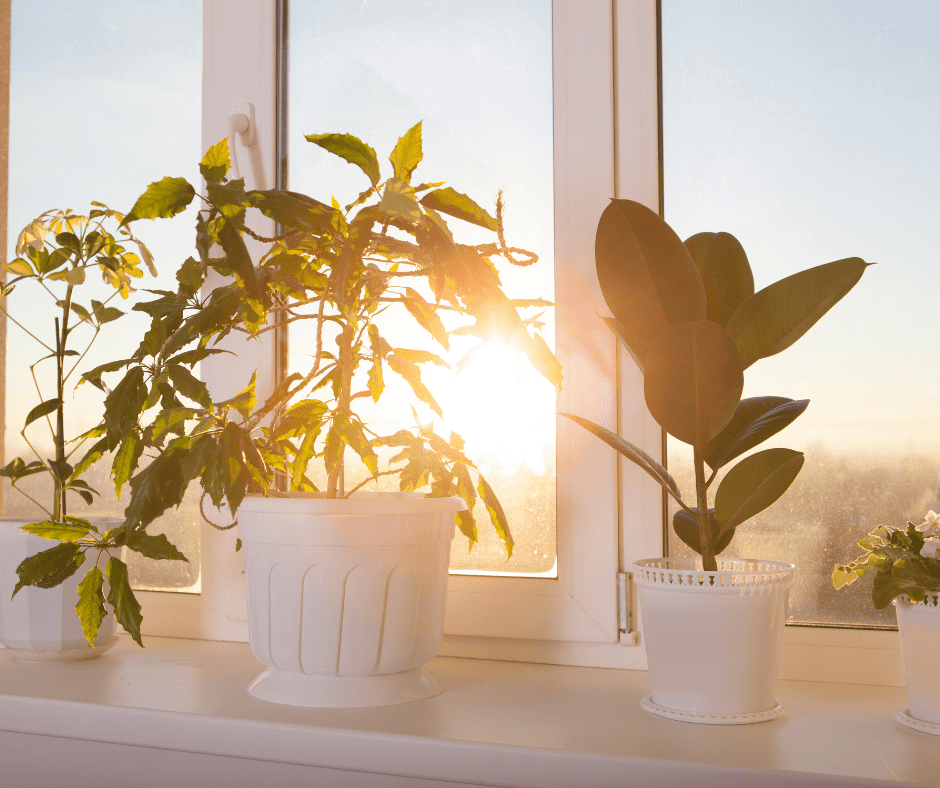
east facing window receiving partial light
Generally, which window sill works best for different plants depends on each plant’s light requirements. In most cases, a plant that requires full sun or a high amount of sunlight needs unshaded south-facing windows. South-facing windows are exposed to the most sunlight during the day, so they have the best shot of ensuring a plant gets what it needs.
For plants that require partial sunlight, an east-facing or west-facing window sill may work better. These get more exposure during the morning or afternoon, respectively, and receive less sunlight during the other times of the day.
If you have a low-light plant, a north facing window receives the least amount of light. However, you need to ensure the window isn’t overly shaded, which could prevent the plant from getting enough light during the day.
However, it’s critical to note that you may need to adjust the placement based on the time of year and where you live. For example, in the far north, daylight hours are incredibly short during the winter months.
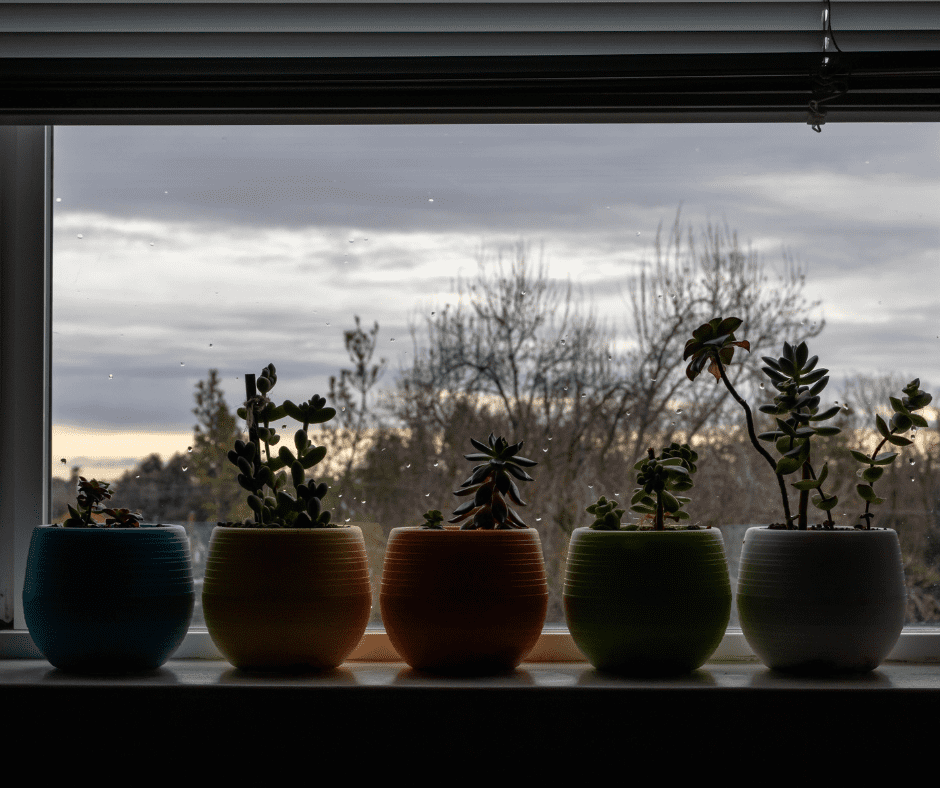
shorter sunlit days in the winter months
If your plants aren’t getting what it needs light-wise due to shifting amounts of daylight during the year, you may need to move them to a different window or supplement the sunlight with a grow light. For instance, relocating a partial-light plant to a south-facing window on short winter days is potentially a smart move to get it enough light.
Can You Start Seeds in a Window Sill?
With seed starting, relying on a window sill isn’t necessarily the best idea. Most seeds don’t require light to germinate. Instead, they need suitable warmth and moisture.
Without enough warmth on your window sill to support germination, your seeds won’t start. Since windows can be drafty spots, you may want to use another location. However, if you have a sunny south-facing window that’s warm enough and draft-free, you can potentially use that spot to start seeds.
Is Sunlight from a Window Enough for Seedlings?
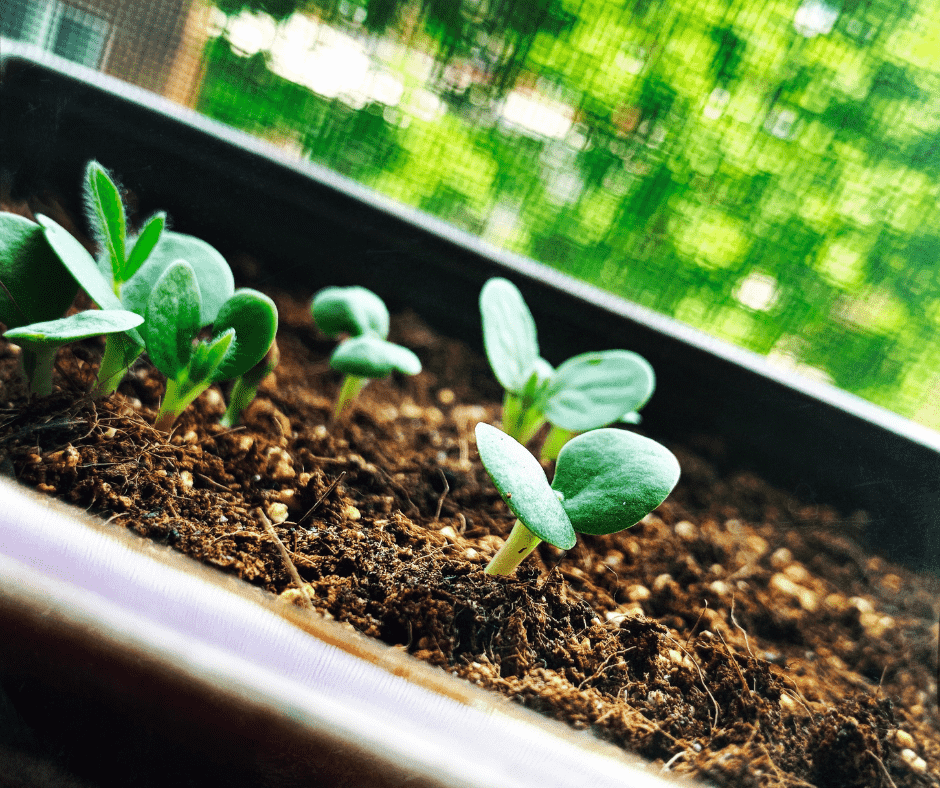
seedlings in a sunny window
When you have seedlings, using a window as their primary light source comes with drawbacks. While sunlight can provide the proper wavelengths, the light coming through windows is directional. As a result, your seedlings may start to lean toward the window, and that’s potentially problematic.
Now, you can offset the leaning by rotating your seedling container regularly. However, since you can position a grow light right above seedlings, that’s a far easier solution. The seedlings will grow up toward the light, keeping them straighter without the need for rotating.
It’s also important to note that sunlight through windows isn’t stable. If the intensity isn’t suitable, seedlings may not strengthen as much as you’d like. That issue isn’t present with a grow light, which is why grow lights are potentially better choices for seedlings.
Should You Use a Grow Light by a Window?
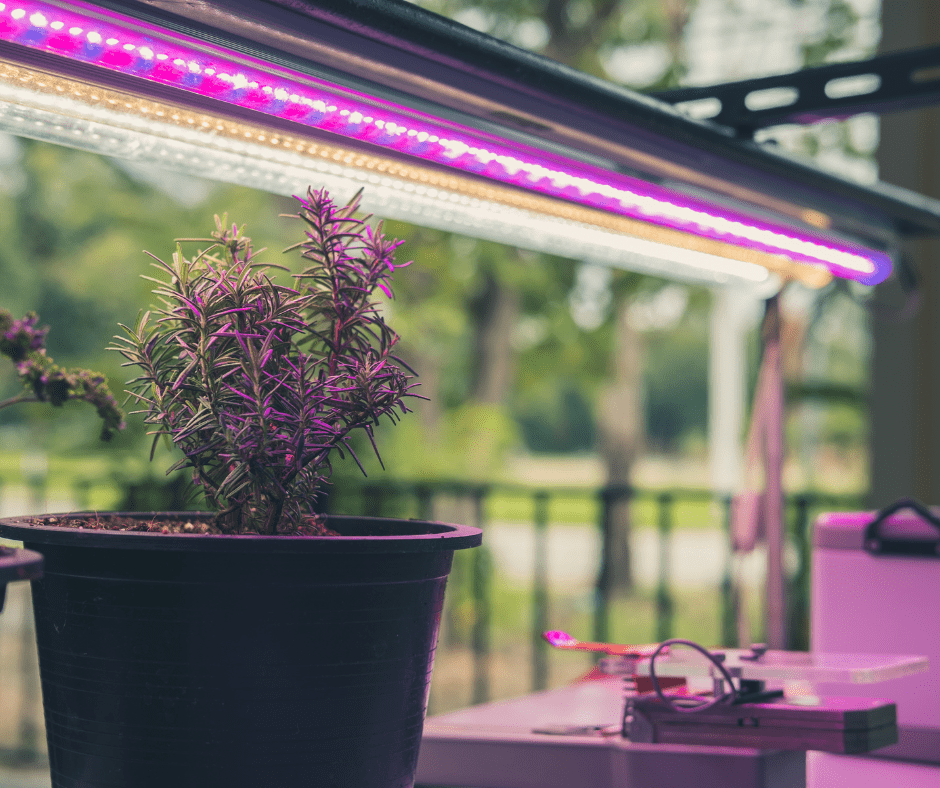
led light near a window
You can use a grow light by a window if you want to supplement natural sunlight. You can use the grow light to functionally extend the number of daylight hours, counteract the directionality of sunlight through a window, or adjust the wavelength mixture to support specific phases.
Be vigilant about the heat if you place a grow light by a window. Thermal breakage can occur if temperature changes cause the window glass to expand or contract too quickly. If your grow light runs especially hot, don’t place it overly close to the window. Instead, leave enough space to prevent thermal breakage.
Combining Sunlight and Grow Lights
In many cases, combining sunlight and grow lights is the best choice if you want to support plant growth. By using both options, you can get the benefits of natural sunlight and supplement it with artificial light to overcome specific challenges. For example, on short winter days, you can use a grow light to functionally extend the day for your plants.
Often, the easiest way to combine sunlight and grow lights is by having a grow light fixture near plants positioned on window sills or similar areas within your home. You can set an automatic timer to turn the grow light on and off at the appropriate times, providing supplemental light without leaving it running 24 hours a day.
That approach can also help you save energy. You can have the grow light turn on before dawn and only run it until sun up or at dusk and leave it running for a few hours before switching it off. With that, you’re mimicking a longer daylight cycle without overlapping your use of a grow light with daylight hours.
Just make sure you adjust the timing as you transition through the year and based on how your plants do. All plants have unique needs, so it’s best to make changes to ensure your plants can thrive.
Enjoyed this post? Pin it!



